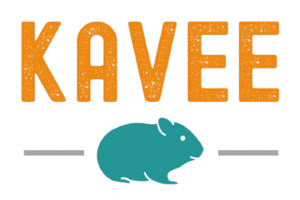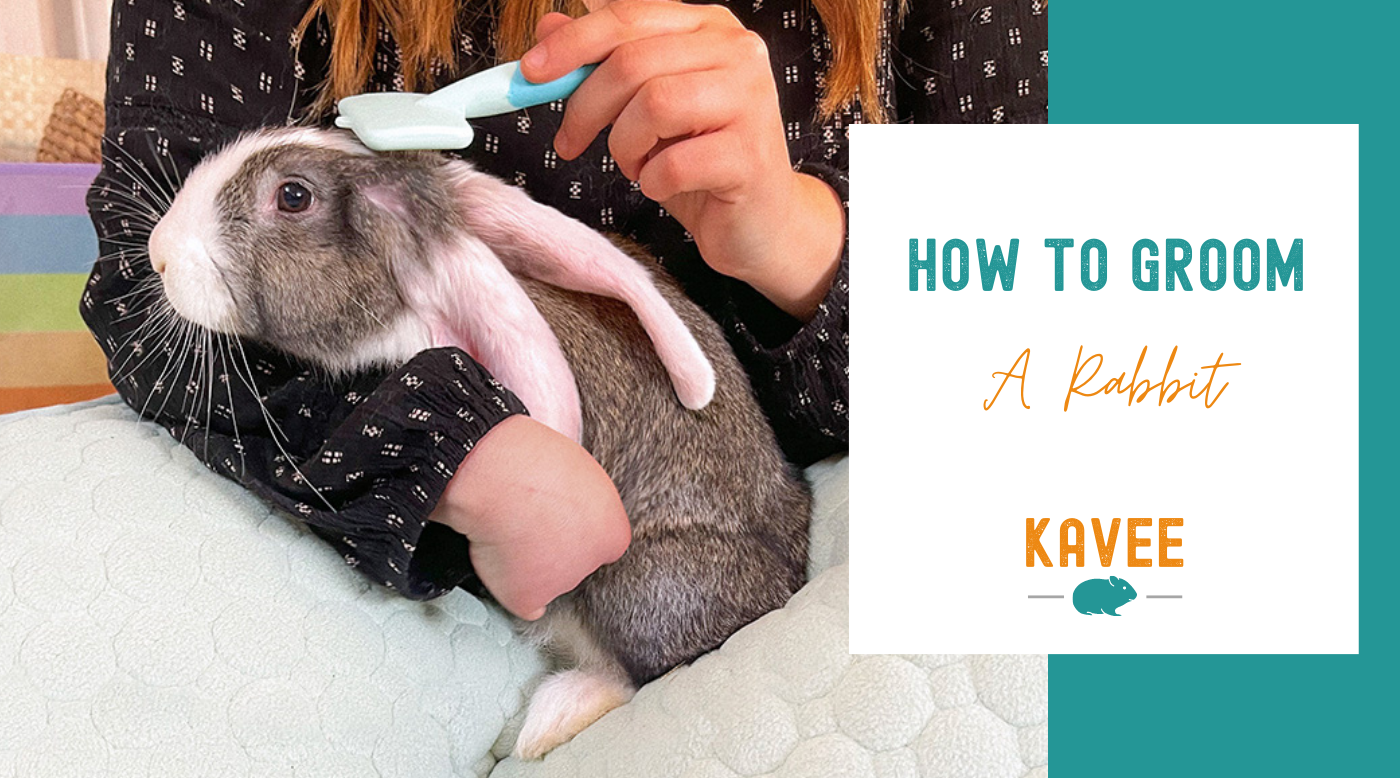Whether you’re the proud pawrent of a short-haired bunny or a long-haired cutie, you should become familiar with the importance of rabbit grooming. This task isn’t just a way to keep their fur looking fabulous, it also contributes to their health and hoppiness.
But if you’ve never groomed a rabbit before, where do you even start? We’re going to make things easier for you by compiling all information you need to know about this important part of rabbit care in this blog.
From nail trimming to hair brushing, let’s dive into everything that makes up a rabbit grooming routine and find out why it’s so important for your bunny’s wellbeing.

The Importance of Rabbit Grooming
While your bunnies will do their best to look after their coats by regularly grooming themselves, they will also need your help to keep up with any build-up of fur, matted hair, and overgrown nails.
This isn't just for appearance, it also has a significant impact on their health. If they ingest too much excess fur, it can slow down their gut, while matted hair causes irritation and long nails force them to move in an uncomfortable way.
These issues can simply be prevented by ensuring that you brush your bunny’s fur as often as their coat requires it. So let’s keep your bunnies happily binkying by learning what it takes for great rabbit care and grooming.

Rabbit Hair Brushing
Everybunny can benefit from a good brush - even short-haired rabbits need a bit of TLC to keep their fur in healthy conditions. Plus, it's a great bonding moment for the two of you!
Frequency of Grooming
Long-haired rabbits should ideally be groomed every day, as they’re more likely to get matted hair and dirt stuck on their floof.
Short-haired rabbits, instead, can be groomed just once a week. However, if your bunny is poorly and can’t groom themselves, they might need a more frequent brush to keep their coat in check.
During molting season across Spring and Fall, you might also have to give them a few more grooms to prevent issues.
How to Groom a Rabbit
Step 1. Get your rabbit comfy by placing them on a towel in front of you.
Step 2: Use a slicker brush to groom your bunny, always following the direction of hair growth. Be gentle and especially careful around the eyes and ears.
Step 3: If you have a long-haired bunny or your short-haired floofer is molting, use a comb to remove any tougher matted hair, applying gentle pressure while avoiding pulling. If the matted hair still doesn’t come off, avoid applying more pressure and let your vet take care of it.

Rabbit Nail Trimming
Rabbit nail trimming might sound like a daunting task but learning how to do it can save you many trips to the vet.
Frequency of Nail Trimming
On average, you should be trimming your rabbit’s nails once a month or every two months.
Your bunny’s nails are always growing, so they would benefit from you checking on them regularly. Overgrown nails force your bunny to walk in an unnatural way, applying pressure on their joints. And if they suddenly split they could cause more discomfort for your poor floofer!
How to Trim a Rabbit’s Nails
Step 1. Get your rabbit comfy by placing them on a table, on top of a towel. Grab a pair of nail clippers that are specifically designed to clip small pet nails.
Step 2. If you have someone helping you out, give them the job of keeping the rabbit still, holding the bunny in a way that leaves the paws easy to access.
If you’re on your own, try holding the rabbit against your body and wrapping them with your arm while gently holding one of their paws.
Step 3. Before cutting anything, identify where is the quick of the nail, as that contains the blood supply and should never be cut. To help you with this, you can try shining a light behind the nail, as that would highlight where the quick ends and where you can cut from.
Step 4. Start with the front paws and cut just above the quick, repeating the same steps for every nail.
This whole process might take a bit longer if you’re doing the comforting and cutting all by yourself but be patient, and your bunny will thank you for it!

Rabbit Ear Cleaning
Rabbits can suffer from a build-up of wax exactly like hoomans do, and no one likes the discomfort of being unable to hear properly!
But obviously, they can’t do much about it without your help. This is another one of those tasks you can carry out in the comfort of your home so let’s look at how to safely clean a rabbit's ears.
Frequency of Ear Cleaning
You should be cleaning your bunny's ears at least once every month, so that nothing unusual might go unnoticed. If you spot your bunny tilting their head or frequently scratching, then make sure you check their ears immediately and book a trip to the vet.
There are also some other signs that could point to an infection and should therefore require a vet visit:
- Swelling
- Redness
- Foul smell
- Discharge
How to Clean a Rabbit’s Ears
Step 1: Approach your bunny quietly and calmly, and place them on a soft surface for examination, like a fleece liner.
Step 2: Gently lift their ears and examine them, paying attention to whether anything looks unusual. Use a light to watch out for mites or blockages.
Step 3: If all looks normal, then proceed to gently clean the outer side of their ear with a damp cloth or soft cotton ball. You can dip this in warm water or a saline solution to make the wax easier to remove.
Step 4: Reward your bunny for being such a good sport with a little treat, this will help sweeten any future ear inspections!
If you spot a build-up of wax in the deeper part of your bunny's ear canal, leave it for your vet to remove. Do the same if any of the wax you're trying to remove is too stubborn to come off - never apply pressure, stick anything inside the ear, or use products that haven’t been recommended by your vet.

Grooming and Your Rabbit's Living Environment
Your rabbit’s living environment can affect their health in more ways than you may think. After all, they spend most of their time hopping about in that space - snoozing in a hidey or munching on some tasty hay.
If you don’t keep their cage and free-roaming environment regularly clean, then their fur and skin will get dirty more easily, and potentially get irritated or infected. By paying frequent attention to the cleanliness of their living quarters, you’re also looking after their wellbeing.
C&C cages for rabbits are designed to make cleaning a breeze as they’re super easy to access, both for you and your bunny. By choosing the right cage for your rabbits and looking after it correctly, you can prevent potential health issues from happening.

Conclusion
Establishing a regular grooming routine for your bunny from the start will make it easier for them to get used to it, and it’s also a great way to bond with your furry friend.
If you’re only just getting to know your rabbit, it might take a few goes before they become comfortable enough to let you carry out a full groom without complaints. Just be patient, and always reward your bunny afterward to help them associate this moment with something positive.
In the long run, this is a sure way to create a strong bond and get healthy binkying bunnies!





